"It was the devil's feast ..." Sturm Gallipoli
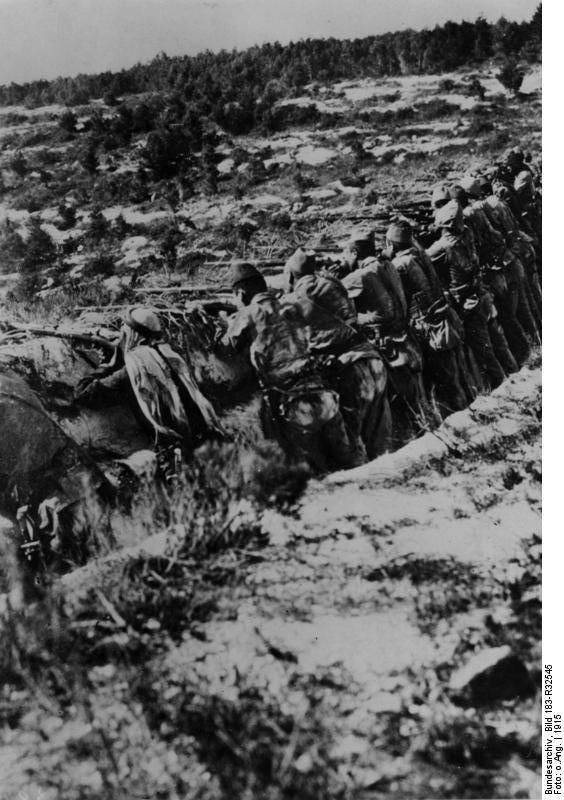
UK influenced by failed action fleet decided to switch to a large-scale landing operation. The Anglo-French command decided to continue the Dardanelles operation by landing troops on the Gallipoli Peninsula in order to capture Turkish forts from the rear and thereby facilitate the breakthrough of the fleet through the Dardanelles into the Sea of Marmara and further attack on Constantinople. However, favorable time was lost; the German-Turkish command had time to strengthen the defense of the straits. As a result, the allied forces suffered heavy losses in the very first days of the operation.
At the same time, the allies were not in a hurry with the operation. The commander of the expeditionary forces, Ian Hamilton ordered the airborne corps to leave Lemnos and proceed to Alexandria, where the troops were to disembark from the transports. The commander wanted to get acquainted with the troops and put them in order. As a result, in Alexandria, for a whole month, the troops of the expeditionary corps prepared, overloading the ships in the order required for the landing force. The training was accompanied by shows, theatrical performances, and cinematic filming, which allowed the enemy to learn about the forces of the Entente.
Britain again tried to involve Greece in operation. Athens seduced Cyprus and Smyrna. However, the failure of 18 March operation weakened the supporters of the Entente in Greece. Prime Minister Venizelos, who supported the Entente, resigned. The pro-German party triumphed in victory. However, in order not to spoil relations with London, Greece promised to maintain neutrality and set up a volunteer legion of a thousand people, formed on the island of Lemnos.
The Entente also tried to attract Bulgaria to its side. The Allies offered Bulgaria a part of the Romanian Dobrujdi, informing that Romania in return would receive after the war a part of Hungary, whose population are Romanians. Then Bulgaria promised Eastern Thrace to the Enos - Midia line and, finally, access to the Sea of Marmara at Rodosto, which was to become a Bulgarian port. Bulgaria inquired about the position of Greece. The Greeks reported that they had no claim to Eastern Thrace. Bulgaria then demanded more parts of Serbian and Greek Macedonia with the port of Cavalla. At the same time, Berlin and Vienna also inclined Sofia to their side, making a number of seductive proposals. As a result, the Bulgarians were ready to take the side of the Central Powers, but they were still afraid of Russia. At the same time, Sofia did not want Russia to receive Constantinople. As a result, Bulgaria has so far remained neutral, but cold in relation to the Entente.
In addition, in order to secure Russia's participation in the union and its interest in actions against Turkey, the allies agreed to the transfer of Constantinople to Russia. In March, 1915 an English-French-Russian secret agreement was concluded. Russia was to receive: “the city of Constantinople, the western shore of the Bosporus, the Sea of Marmara and the Dardanelles, South Thrace to the Enos-Midia line, as well as the Marmara Islands, Imbros (Imroz) and Tenedos (Bozcaada) and part of the Asian coast between the Bosphorus, p. Sakarya and the point to be determined on the shore of the Gulf of Izmid. " For the Russian government, all this was the fulfillment of old dreams. At the same time, England and France stipulated their interests in the region.
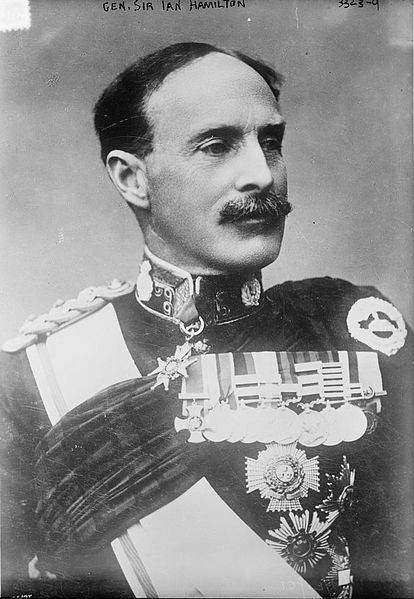
Commander of the Landing Forces Jan Standish Montit Hamilton
Turkish defense
In the meantime, the Turks significantly strengthened the defense of the Dardanelles. Nobody disturbed them for a month. In addition to the 9 Infantry Division, which had been in the Dardanelles since August 1914, in November, the 7 Infantry Division was transferred here, in February 1915, in Maydos 19, the Infantry Division, in March - in Kum-Cali 11- I Infantry Division and 5-I Infantry Division arrived in Bayramich. The Turks were restoring damaged fortifications, preparing for the landing of the enemy assault. The peninsula was covered with wire barriers. Created the necessary stocks of ammunition and other materials. Large land groups were now both on the Asian coast and on Gallipoli near the Gulf of Sarossa, with a strong vanguard at Sedd el-Bar and reinforcements at Achi Baba.
The Turkish General Staff had information that the Allies would undertake a joint operation of the fleet with a landing force, whose forces were supposed to be one corps. Therefore, the Turkish commander-in-chief Enver-Pasha decided to form a separate army to defend the Dardanelles - 5, under the command of Otto Lyman von Sanders. The 5 Army included the five divisions of the 1 Army, which were already located on the shores of the Dardanelles, they were reinforced by the 3 Infantry Division and the cavalry brigade. Enver believed that the Balkan states could invade Thrace, so he decided to leave part of the 1 and the entire 2 army in Thrace in a strategic reserve. In addition, the Dardanelles area was reinforced by the old siege artillery, which was taken in Adrianople.
Sanders located his headquarters in Gallipoli and, accompanied by General Mehmet Essad Pasha (Esat Pasha), traveled all over the peninsula and the entire Asian coast in cars, on horseback and on destroyers. The entire defense system was strengthened, the deployment of troops improved. The units received reinforcements. Measures were taken to improve the communications system by building numerous bridges over impassable ravines for the passage of field artillery. Measures have been taken for the rapid transfer of troops from the Asian coast, from Nagara, to the European - in Maydos. Improved training of troops. In particular, the soldiers were taught the effect of hand grenades, which was then a novelty for the Turks.
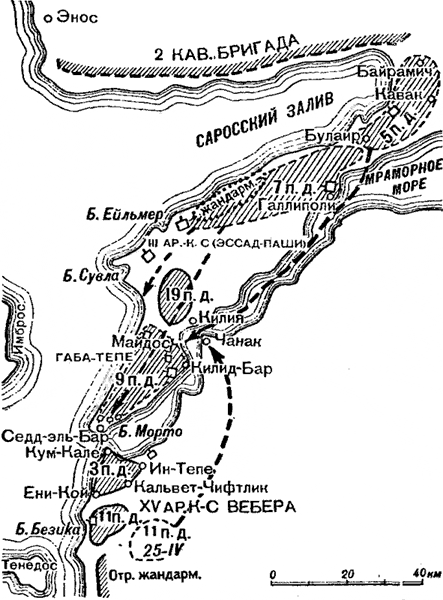
Location of the Turkish troops
The German-Turkish command knew about the upcoming landing of the Allies, but where the Anglo-French troops would land - there was no information. The most dangerous places were considered: the Asian coast from the Bezik bay to Kum-Kale, the western coast of the peninsula from the entrance to the Dardanelles to the bay of Saros and the bay of Saros, especially at the Bulair Isthmus. Therefore, the Turkish troops were located as follows: 1) The Asian side was defended by the Weber 15 Army Corps - the 3 Infantry Division and the 11 Infantry Division. The coast was defended by advanced forces in the battalion 2. The main forces and headquarters of the 3 Infantry Division were stationed at Kalvet-Ciftlik, one hour walk from Kum-Kale, the 11 Infantry Division — further south; 2) the European side was defended by the 3 Corps of the Essad Pasha - 9-I, 5-I and 7-I infantry divisions. The 9 Infantry Division defended the coast of the peninsula, having the 4 battalion in the advanced units, the rest of the forces were stationed in Maydos and Kilid-Bar. The 5 Infantry Division defended the Isthmus of Bulair and the Gulf of Saross, having main forces in the area of Kavak; The 7 Infantry Division reinforced the 5 Division and was located in the Gallipoli area. The 2 Cavalry Brigade observed the northern shore of Saros Bay. 3) Mustafa-Kemal-Bey's 19 Division was located in the reserve of the European side, it was stationed north-west of Maidos.
Thus, 2 divisions of the 5 Army (about 20 thousand people with 50 guns) were located on the Asian side, and all other forces of the army (up to 40 thousand men and about 100 guns) - on the European.
Turkish troops actively strengthened the descent-dangerous areas, widely using artificial obstacles (such as flooded wire nets), put bombs. At the forefront, companies were placed, linked by posts and patrols. When the enemy landed, the advance units had to slow down the enemy’s movement, letting the main forces approach the threatened sector and throw the enemy into the sea.
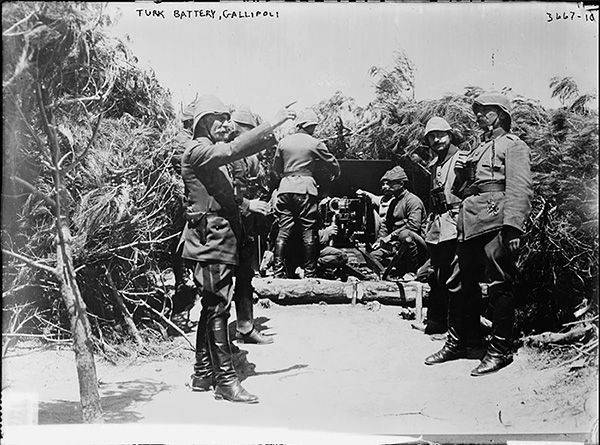
Turkish Battery in Gallipoli
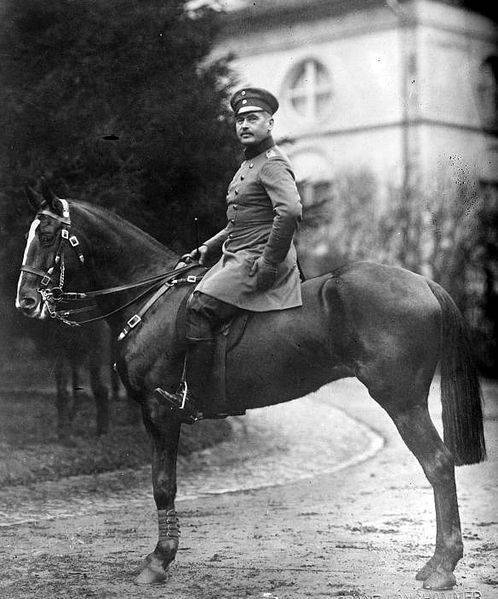
German General Otto Lyman von Sanders
Plan of operation Allied forces
On April 7, the commander of the expeditionary forces Hamilton left Egypt with his headquarters and arrived on the island of Lemnos. Here he met with Robek and finally developed a plan of operation. The general idea of the plan of operation was as follows: with the help of the landing troops, take Gallipoli batteries from land and thereby open the way for the fleet. The capture of the fortifications of the European part allowed to dominate the strait and destroy the fortifications of the Asian coast. To do this, it was necessary to capture three fortified positions, breaking the very rugged terrain. Inland from Cape Helles consistently ran through three valleys, with three dominant ridges - Kerevez-Dere, Aci-Baba and the Kilid-Bar plateau.
The British and 1 French Infantry Divisions, the Australian-New Zealand Corps (ANZAC), three brigades of British marines and the Greek Volunteer Legion (total 1 thousand people) were assigned to the landing. When the troops there 81 guns of different calibers. The reserve in Egypt were the 178 English and 1 Indian infantry divisions. Allied fleet at this time consisted of 2 squadron, including 7 battleships, cruisers 18, 13 destroyers and torpedo boats, submarines 36, 12 minesweepers, 25 network frequency barriers, 2 1 air transport and transport with the balloon.
Thus, the power of the Allies and the Ottomans were almost equal. The Allies did not have a great advantage in manpower or artillery, which would allow them to break the enemy defenses with one powerful blow. At the same time, the Turkish troops occupied previously prepared positions, and the terrain was favorable for defense and difficult for landing. The Turkish troops were poorly prepared tactically, which the Germans were actively trying to rectify, but the Allies did not have their best units in this direction.
Only the French division of Brigadier General Albert d'Amad was well prepared. The 29 Infantry Division in England was newly formed, only the core of the staff was well prepared. The soldiers of the two divisions of the Australian-New Zealand Corps had a high morale, but were completely weak in tactical training. For most of the soldiers, this was the first combat operation. In addition, British and French soldiers were to attack in extremely difficult terrain, upwards - on the steep slopes, where the enemy’s firing positions were equipped. The operation was complicated by dispersion of forces - the landing was supposed to be landed immediately on five beaches. In such conditions, the troops could not normally interact.
Hamilton planned that the ground forces should help the fleet reach Kilid-Bar and Chanak. On the Gallipoli peninsula, they planned to deliver two main attacks: 1) on the southern tip of the peninsula with units of the 29 Infantry Division, landed on the beaches “V”, “W” and “X”; 2) Australian-New Zealand Corps at Gaba-Tepe. At the same time, diversion landings were carried out: 1) by parts of the same 29 infantry division and marines on the S and Y beaches, 2) by the French brigade at Kum-Kala, on the Asian side of 3) only by the fleet with parts of the Greek legion in the gulf Saros Each landing was to be preceded by a brief artillery preparation, and then during the landing itself, the troops were covered with ship fire.
The operation decided to start 25 on April 1915. It was decided that the transports with the troops would arrive at the peninsula 2 hours before the landing, then the paratroopers would go to the landing craft, and at dawn they would approach the coast under the cover of the fleet. In 5, a squadron of 7 battleships and 4 cruisers was supposed to begin artillery preparation. In 5 hour. 30 min. the landing itself began, both on the European and Asian shores. In Gallipoli, the troops were to attack Kritia and the position of Achi Baba on the move.
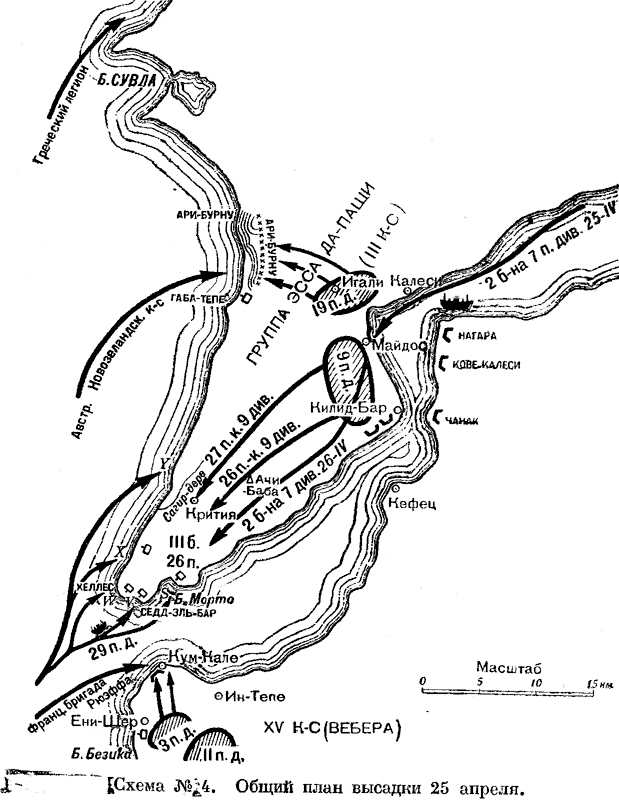
Operation plan
Battle
In the evening of April 23, the first transports with a landing arrived to the island of Tenedos. To divert the attention of the enemy, the fleet began bombing the Turkish positions. In the afternoon of April 24, the troops were transferred to landing craft. At dawn 25 on April, the landing forces headed towards the designated landing points. The weather was favorable, the sea was calm. Large-caliber shipboard artillery shelled the entire coast and rear. Turkish artillery was silent, not responding to the fire of naval artillery, so as not to unmask its positions ahead of time. The Turks patiently waited for the enemy to approach.
The Allies were helped by the fact that the German-Turkish command did not expect the main landing at Sedd ed Bar. The Turks until the last moment believed that there would be a demonstration here, and the main grouping of their forces was located in the depths of the Gulf of Saros, at Bulair and Maydos. Moreover, when the battle began, Essad Pasha ordered the commander of the 19 division, Mustafa-Kemal, to direct all forces of the division to Ari-Burna. Thus, the entire 19 Infantry Division of the Turks was focused on Ari-Burna against the Australian-New Zealand Corps. At the same time, almost all of the remaining reserves of the 9 Infantry Division were sent to the beaches of the southern tip of the peninsula.
Beach "V"
The main landing was supposed to land on the beach "V". However, here the Turks had strongly fortified positions. Nature itself has created here a natural, inaccessible position. On the eastern side was the “European Castle” (Sedd-El-Bar) - a medieval structure with powerful walls that could not be destroyed by bombardment. In the center were located fortified positions, towering above the sea. In the west, Cape Helles was like a natural wall, as high as 40 m, falling vertically into the sea. Taking such positions on the move was almost impossible. Needed a strong artillery preparation.
The assault force was advancing in two echelons: the 1 echelon on the ship’s boats — the 3 of the company of riflemen and a platoon of marines; The 2 echelon on the River Clyde coal carrier converted for the landing is about three battalions of the 88 Brigade of the 29 Infantry Division under the command of General Nepira. After a half-hour bombardment, eight tugboats, each leading four large lifeboats, quickly went to the shore. The Turks did not respond to the ship artillery fire and allowed the ships to pass in front of Cape Helles. However, when the boats moved to the oars, the Turks opened heavy fire from 37-mm guns and machine guns. The paratroopers, in order to reach the shore faster, jumped into the water, but they were stopped by wire barriers. As a result, almost the entire first echelon was knocked out, the boats were carried away in waves. The remaining soldiers were injured.
Particularly effective was the fire of the German machine gun MG.08 - the German version of the machine gun "Maxim". “It was the devil's feast,” Herbert Kitchener later recalled that day. “A terrible memory of this day will never leave me: everywhere the waves of the surf beat in a wide ridge from the bodies of our killed soldiers - truly American Maxim created the instrument of the devil.”
The comparatively strong firepower of the Turks, the British could respond with fire only 10 machine guns with coal. Huddling to the sandy shoals in the middle of the beach, the amphibious transport opened its port and the paratroopers rushed to the shore. The first two companies of the second echelon were almost completely mown in a few minutes. Killed and General Nepir. Only part of the personnel of the third company, mostly wounded soldiers, jumped ashore and, behind the dune, entrenched themselves. By 10 hours the battle subsided.
Carboze, built of sheet iron, covered people from Turkish fire. From it, under the cover of machine-gun fire, they were able to land a unit, reinforcing the people who were on the coast under the cover of dunes. The Turks also received reinforcements from the 9 Infantry Division, which allowed the advance units to hold positions. By 14 hours under the protection of the newly opened ship fire, second-tier soldiers from River Clyde crossed to the coast in small batches and at night were able to dig in the ruins of the European Castle.
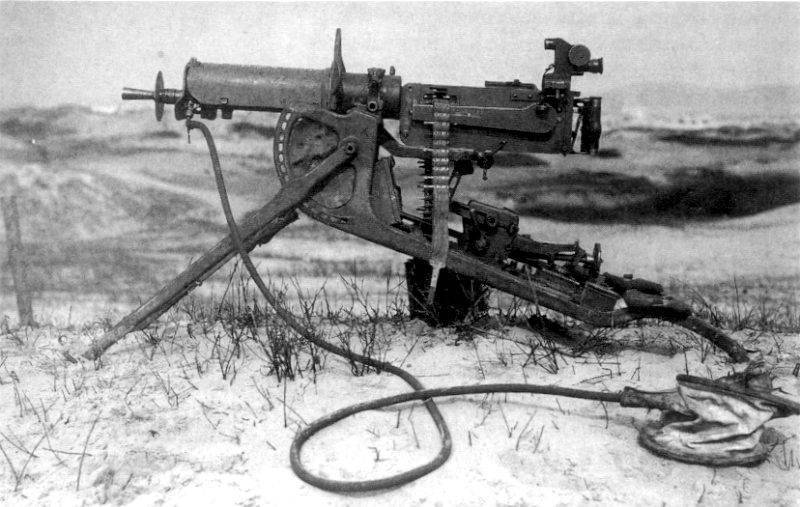
MG 08 (German Maschinengewehr 08) is a version of Maxim's machine gun for the German rifle cartridge 7,92 × 57 mm. MG 08 was produced in Germany since 1908, and was actively used by the German army in the First World War.
Beaches "W" and "X"
The beach area “W” was generally similar to that at the beach “V”. In the east, there were large sheer walls of Cape Helles, and in the west, Cape Teke-Burnu. There were wire obstacles all over the beach, continued and under water, besides, land mines were laid in the coastal sand and in the water. All heights were reinforced, with the possibility of cross-fire.
Six mouths of the 86 and 87 brigades of the 29 division with units of marines landed here. The battle took place in the same way as on the beach "V". Ship fire did not cause serious harm to the enemy. The fog prevented the shooting of the battleships. Turkish artillery was silent, not giving out the position. But when the boats approached the coast, a murderous rifle, machine-gun and artillery fire was opened at the landing. British soldiers, suffering heavy losses from fire and landmine explosions, were also detained in flooded wire barriers and drowned under the weight of equipment. Only by 6 hour. advanced units were able to land. By 9 the clock managed to transfer reinforcements and take the advanced trenches of the Turks.
However, Cape Teke was well fortified. And when British troops attempted to break through the connection with the units that landed on the beach "V", they came across wire barriers and land mines, a strong barrage. The British suffered huge losses. Only the support of a small detachment, landed in a small cove, north of Cape Teke on the beach "X", made it possible to resist and avoid complete defeat. At night, reinforcements were planted, which made it possible to repel Turkish counterattacks and gain a foothold.
April 25 landing
Beach "Y"
On the beach "Y", the Anglo-French command planned to hold only a demonstration. Here, Colonel Matyuz’s detachment (9 of the Scots mouth of the 87 th brigade of the 39 th division and marines), not finding a convenient landing site on the beach designated by Hamilton’s order, rose north of Sagir-dere and began to successfully land at the foot of Ari Stormy.
The detachment planned to get in touch with the units, landing south on the beach "X". However, the troops of the 9 of the Turkish division blocked the road to the south. Then Matthews moved part of his squad forward to capture the heights that dominate the road to Critia and Sedd el-Bar. The detachment traveled several kilometers and then was attacked by the regiment of the 9 Infantry Division, which had come from Maidos. The paratroopers suffered heavy losses and retreated to the shore, where they were evacuated at night. Despite this, his actions on the beach "Y", the detachment contributed to the success in the main direction of impact.
Beach "S"
Just like on the “Y” beach, the landing here had purely auxiliary objectives. The Turks here had a strong defense. However, the three companies of the 29 Infantry Division under the command of Kesson were able to take the enemy's advanced units with a swift attack. Despite the heavy machine-gun fire. K 8 hour. 30 min. The British took the ruins of the battery Totts. Here the terrain conditions allowed the ships to provide effective assistance to the paratroopers. As a result, the British entrenched themselves at Eski-Gissarlik and repulsed Turkish counterattacks. The next day, the Turkish troops organized strong counterattacks, and the British held out only with the support of ship fire.
Landing at Gaba-Tepe
Anzac troops landed here. Australians and New Zealanders began to land under the battalion of the 9 Infantry Division under fire and immediately began to suffer heavy losses. However, despite the great damage, the Australians heroically went forward. With the support of ship fire, the Australians rushed to the bayonets to part of the advanced Turkish battalion and climbed the cliffs to 9 watches. However, by this time, units of the 19 Infantry Division were deployed here to reinforce the Turkish advanced units.
The Turks stubbornly resisted, taking in advance prepared positions. Mustafa Kemal Pasha, who was with his 19 Infantry Division in the general reserve not far from Maydos, personally led to the 5 counterattack of his division with two mountain batteries on his own initiative. The commander of the 3 Army Corps, Essad Pasha, endorsed this idea and sent the rest of the 19 Division to eliminate the breakthrough. Making a throw along the coast, the soldiers of Mustafa-Kemal-pasha stopped the attack of the ANZAC fighters.
Australians were in a dire state. Thousands of ANZAC fighters landed on the 12, unable to advance, grouped on the 1500 X 500 square, and suffered huge losses from enemy fire. Soon the losses reached 5 thousand people. The Turks were actively firing on the positions of the ANZAC and the supporting hull of the ship group. A large number of boats that continued to land paratroopers, was drowned. In these conditions, the Australians have shown real heroism and self-sacrifice. They continued the landing and repulsed several Turkish counterattacks.
Asian shore
While the British and Australians landed on the European coast, the French brigade Rueffa landed on the Asian coast. The operation took place with the active participation of the Russian assault crew of the cruiser “Askold”. The goal was also to divert enemy forces from the main landing site on the Gallipoli peninsula.
Before dawn 25 April, French ships supporting the landing landed Yeni-Sher and Kum-Kale. On the first day, the French, with the support of ship fire, succeeded in taking Kum-Kale and Yeni-Sher. However, the arrived part of the 3 of the Turkish division stopped the promotion of the French. A stubborn counter-fight broke out. The Turks broke into Kum-Kale, where a street fight began to boil. The French ships ceased fire, fearing to cover their own. The Turks ousted the French from the village of Kum-Kale, capturing a company of Senegalese. With the help of reinforcements and ship fire, the French beat off part of the village. 26 April morning was ordered to clear the Asian shore. French troops were put back on ships and transferred to the European coast.
Continuation of the operation
The Allied Command used the night to support and supply with all necessary three detachments on the “S”, “V” and “W” beaches that defended against repeated Turkish attacks and were in a very difficult position. All the reserves that the Anglo-British command on the island of Lemnos had had, were sent here. At the same time, the Indian division, located in Alexandria, was hastily summoned from there. The Allies, despite the heavy losses, decided to continue the offensive.
In the morning of April 26, the ANZAC advanced somewhat and improved its position. However, the Australians were still under heavy enemy fire and suffered heavy losses. People who fought and didn’t sleep around 36 hours were terribly tired. The Australians were saved by the fact that the Turks were in the same difficult situation, they were drained of blood and tired and could not throw the enemy into the sea.
26 April on the beaches of "W" and "V", the British were able to take the village of Sedd-El-Bar, the remaining ruins of the old castle and the height separating the beaches of "W" and "S". The British broke through three lines of Turkish trenches, and the squads of the beaches “W” and “V” entered the connection. True, on this the British have exhausted all their reserves. They had to move the French to Sedd-el-Bar.
By the morning of the third day on the southern tip of the Gallipoli Peninsula, the Allies occupied a position that included all the beaches from the beach "X" to Morto Bay, the entire width of the peninsula, to a depth of 1 km from the sea coast. The Allies had exhausted their reserves, the troops that had been onshore had to be reinforced by the marines and the Indian brigade, which had been transferred from Egypt by that time. At the same time, artillery reinforcements began to arrive at the heights of Achi Baba to the Turkish troops. However, the positions captured from the Turks gave some protection. The Allies began to build a logistical infrastructure.
Results of the first days of the battle
The Turkish 5 Army as a whole accomplished the task and stopped the enemy offensive. In this case, the German-Turkish command, having made a mistake with the direction of the main attack of the enemy, could not throw the enemy into the sea. In order to finally decide the matter in its favor, the forces at the southern tip of the peninsula lacked. At the same time, the Turks retained large reserves: the 11-I infantry division - in the Asian part, in the sector that was not attacked by the enemy, the 5-I and 7-I infantry divisions - concentrated on alert on the Bulair isthmus.
Sanders was expecting the main operation of the Anglo-French army from the Gulf of Saros on the Isthmus of Bulair, and only in the evening realized his mistake. Sanders ordered the 5 Infantry Division to immediately move from Boulair to Sedd el-Bar, and he sent the 7 Infantry Division from Bulair to Ari-Bourne front, against ANZAC, and partly to Sedd-el-Bar. In addition, the 11 Infantry Division began to be moved here from the Asian side. At the same time, these divisions could be replaced by the troops of the 1 Army, which was located not far away. The 5-i and 7-i infantry divisions were able to arrive already on April 26, and the 11-i infantry division - on April 30. This made it possible to contain further pressure from the Anglo-French forces.
The desperate heroism of the British and French soldiers eventually made it possible to somewhat correct the mistakes of the command, did the seemingly impossible - they entrenched themselves on the beaches and began to push the enemy around. In this case, the Allies washed their blood. The Allies lost about two days 18 thousand people.
It must be said that the Allied Command missed the time favorable for a large landing operation. Hamilton’s plan was generally correct, since a successful landing on the southern tip of the peninsula led the Allies to the western inner coast of the straits and handed over to the British a group of forts and batteries of Kilid-Bara. This already predetermined success, since the heights of the Gallipoli peninsula were dominant, and from them it was possible to easily destroy the forts and batteries of the Asian side at Chanak and Nagara. Further, the fleet could go to the Sea of Marmara. In February and March, 1915 such an operation could lead to quick and decisive success. However, in April, the German-Turkish command was already ready to repel the strike of the landing corps, forming the 5 Army and creating a field defense system.
Among the mistakes of the 25 operation of April are: the lack of artillery support - from ships and its own field artillery, the landing did not have its own artillery support; comparative insufficiency of forces, the allies did not have a serious superiority over the enemy and large reserves for the development of the first success; mistakes in the organization of the landing force dispersion.
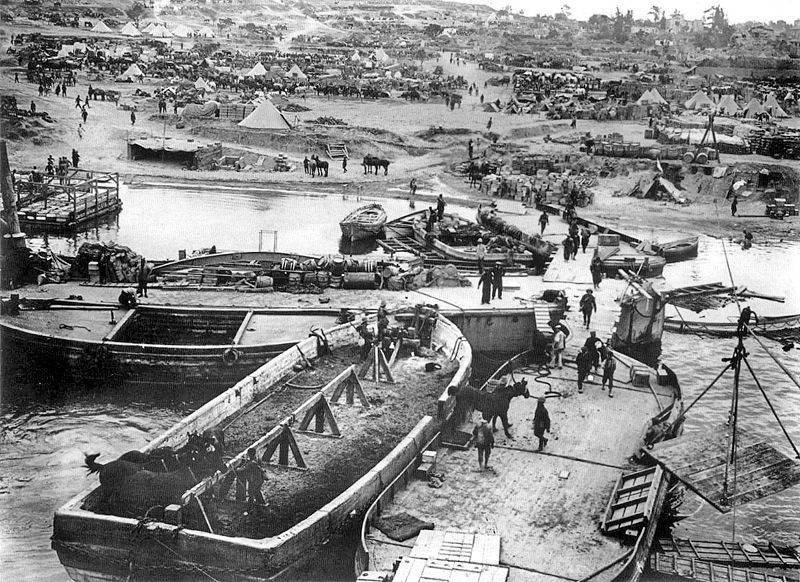
Beach "V"
To be continued ...
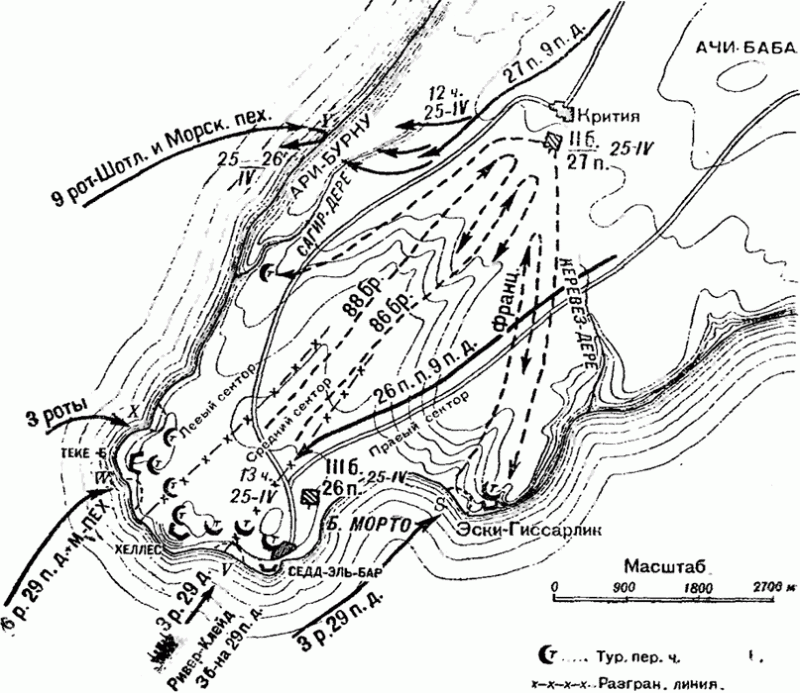
Information